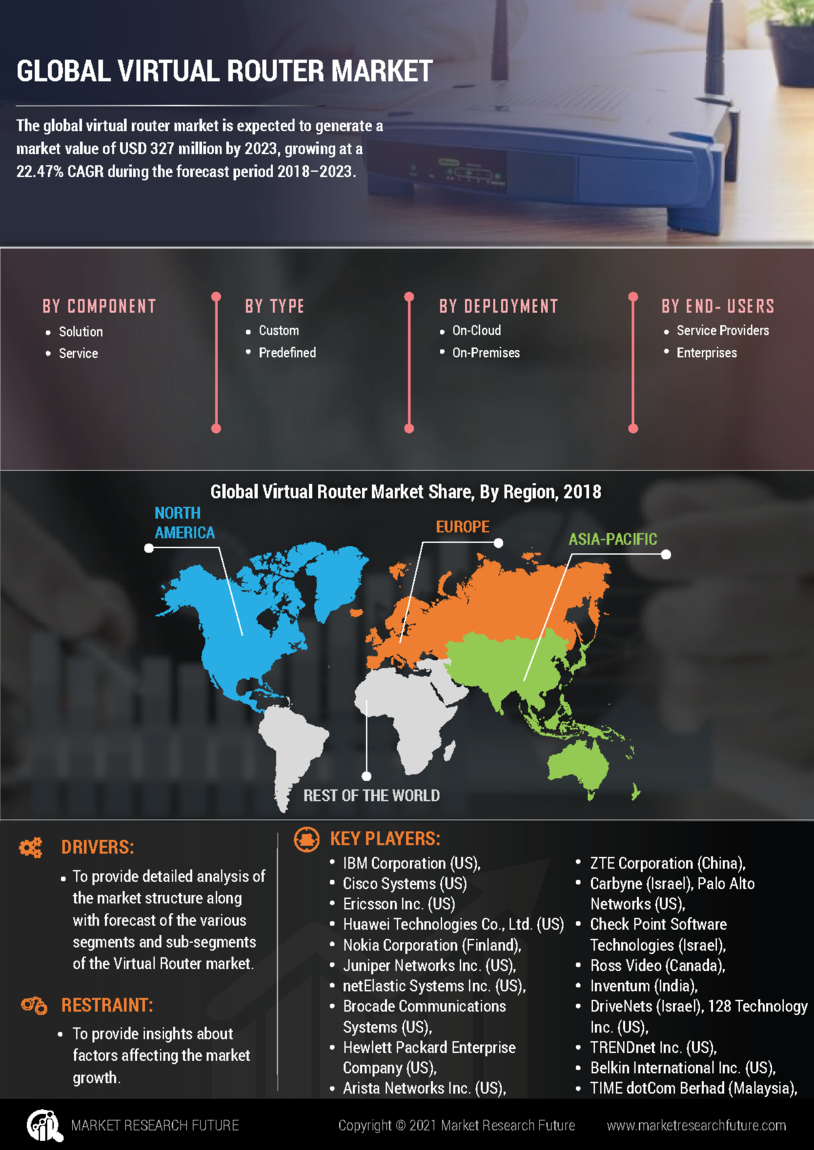Virtual Router Market Summary
As per MRFR analysis, the Virtual Router Market Size was estimated at 0.43 USD Billion in 2024. The Virtual Router industry is projected to grow from 0.5055 in 2025 to 2.547 by 2035, exhibiting a compound annual growth rate (CAGR) of 17.55 during the forecast period 2025 - 2035.
Key Market Trends & Highlights
The Virtual Router Market is experiencing robust growth driven by technological advancements and increasing demand for network solutions.
- The market is witnessing increased adoption of cloud services, particularly in North America, which remains the largest market.
- Focus on network security is intensifying, especially in the Asia-Pacific region, which is recognized as the fastest-growing area.
- Integration with IoT devices is becoming a critical trend, enhancing connectivity and functionality across various sectors.
- Rising demand for high-speed internet and the emergence of 5G technology are key drivers propelling market expansion.
Market Size & Forecast
| 2024 Market Size | 0.43 (USD Billion) |
| 2035 Market Size | 2.547 (USD Billion) |
| CAGR (2025 - 2035) | 17.55% |
Major Players
Cisco Systems (US), Juniper Networks (US), Hewlett Packard Enterprise (US), Arista Networks (US), MikroTik (LV), TP-Link Technologies (CN), Netgear (US), Ubiquiti Networks (US)


















Leave a Comment